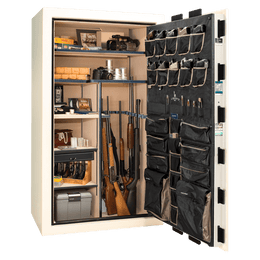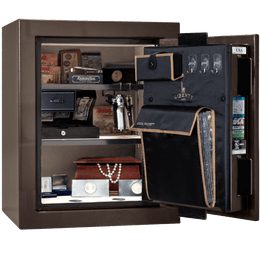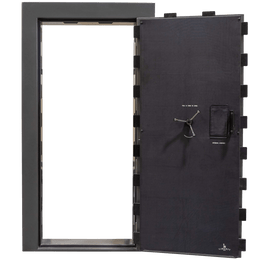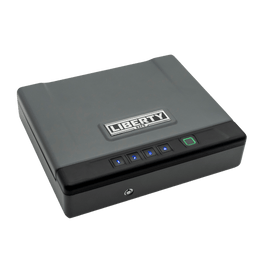Your safe is only as secure as its installation. Learn how to properly anchor your investment for maximum protection against theft and accidents.
You've invested in a high-quality safe to protect your most valuable possessions. That’s a critical first step. However, the security of your safe doesn't end with its purchase. A proper, secure safe setup is essential to ensure it performs as intended. An unanchored safe, no matter how heavy, can be tipped over, tampered with, or even removed from your property by determined thieves. This guide provides professional safe installation tips to help you anchor your home safe correctly, giving you true peace of mind.
Why Anchoring Your Home Safe is Non-Negotiable
Many assume that the sheer weight of a safe is enough to deter criminals. While a heavy safe is certainly a challenge, it's not an insurmountable one for a team with the right equipment. Anchoring, or bolting down, your safe dramatically increases its security in two fundamental ways:
1. Prevents Removal
The primary goal of anchoring is to prevent your safe from being carried away. Thieves often prefer to transport a safe to a private location where they can work on opening it without the risk of being caught. When your safe is securely bolted to the floor, it becomes a permanent fixture of your home, forcing any would-be burglars to attempt entry on-site—a much riskier and more time-consuming proposition.
2. Prevents Tipping and Prying
An unanchored safe can be tipped onto its back, giving thieves leverage to pry open the door, which is the most common method of forced entry. By anchoring it firmly to the ground, you keep the safe upright and significantly reduce the leverage points available for a pry attack. It also eliminates the risk of the safe tipping over and causing injury, especially in households with children.
Choosing the Optimal Location for Your Safe
Where you install your safe is nearly as important as the installation itself. Careful consideration of the location can enhance both security and convenience. For more details on the logistics of moving your safe into place, you can review our guide on getting your new safe in your home.
Structural Integrity
Always choose a location with a solid foundation. A concrete slab in a garage, basement, or ground floor is the ideal surface for anchoring a home safe. If installing on a wood floor, ensure it is positioned directly over floor joists to provide adequate support and a strong anchoring point. Avoid placing heavy safes on unsupported sections of a floor, especially on upper levels.
Discretion and Accessibility
The best location is one that is out of plain sight but still reasonably accessible to you. Basements, closets, and designated utility rooms are excellent choices. Placing a safe in a corner makes it harder for thieves to access the sides with prying tools. Consider the environment as well; avoid areas with high humidity, which could damage your valuables and the safe's locking mechanism over time.
Step-by-Step Guide to Anchoring Your Safe
With the right tools and a little patience, you can achieve a professional-level secure safe setup. Most Liberty Safes come with pre-drilled anchor holes in the floor of the safe.
Step 1: Gather Your Tools
You will need a hammer drill, a masonry bit (for concrete) or wood bit (for wood floors) that matches the diameter of your anchor bolts, a socket wrench, a shop vacuum, and safety glasses.
Step 2: Position and Mark
Carefully place the empty safe in its final location. Open the door and locate the pre-drilled anchor holes. Using a marker or pencil, mark the floor through each hole.
Step 3: Drill the Pilot Holes
Move the safe aside. Using your hammer drill and the appropriate drill bit, drill holes at the marked spots. Ensure you drill deep enough to accommodate the full length of the anchor bolts. Use the shop vacuum to clean all dust and debris from the holes for a secure fit.
Step 4: Reposition and Anchor
Move the safe back into position, aligning the anchor holes in the safe with the holes you drilled in the floor. Insert the anchor bolts through the safe and into the floor holes. You may need a hammer to gently tap them into place.
Step 5: Tighten the Bolts
Place a washer and nut on each bolt. Hand-tighten them first, then use your socket wrench to secure them firmly. Tighten each bolt incrementally to ensure even pressure. Be careful not to over-tighten, as this could damage the safe or the anchors. The safe should be completely immobile once secured.
For comprehensive guidelines on safe maintenance post-installation, consult हमारी Gun Safe Use and Care page.
DIY vs. Professional Installation
While anchoring a safe is a manageable DIY project for those with the right tools and experience, professional installation offers several benefits. Professionals have specialized equipment to move heavy safes without damaging your home, and their expertise ensures the anchoring is done correctly and to the highest security standards. If you are unsure about any step of the process, we recommend seeking professional assistance.
Have Questions About Your Safe Installation?
Proper installation is key to the security of your valuables. If you need guidance, our team of experts is here to help you ensure your safe is installed for maximum protection.
Contact Us TodayFrequently Asked Questions
Do I have to bolt down my safe?
While not mandatory, it is highly recommended. Anchoring your safe is the most effective way to prevent theft of the entire unit and to stop thieves from tipping it over to pry the door open. It is a critical step for proper secure safe setup.
Can I install a safe on an upper floor?
Yes, but it requires careful consideration of your home's structural support. A professional should assess the floor's load-bearing capacity. The safe should be placed over multiple floor joists, and a smaller model like one from our closet safes collection may be more suitable.
What are the best anchors to use for concrete?
For concrete, wedge anchors or sleeve anchors are excellent choices. They expand once placed in the pilot hole, creating a firm, secure grip that is extremely difficult to remove.
What if I want to move my safe in the future?
An anchored safe can be moved. The process involves unbolting the anchors from the floor. You will be left with small holes in the floor that can be patched with concrete filler or wood putty. You can then re-anchor the safe in a new location using a new set of anchor bolts.
Glossary of Terms
Anchor Bolts
Heavy-duty fasteners designed to attach an object (like a safe) to a masonry surface such as concrete. They typically expand after being inserted into a drilled hole to create a secure hold.
Hammer Drill
A specialized power drill that provides a hammering action in addition to rotation, making it highly effective for drilling into hard surfaces like concrete or brick.
Floor Joists
Horizontal beams that run between foundations, walls, or larger beams to support a ceiling or floor. When installing a safe on a wood floor, anchoring into joists provides essential structural support.







